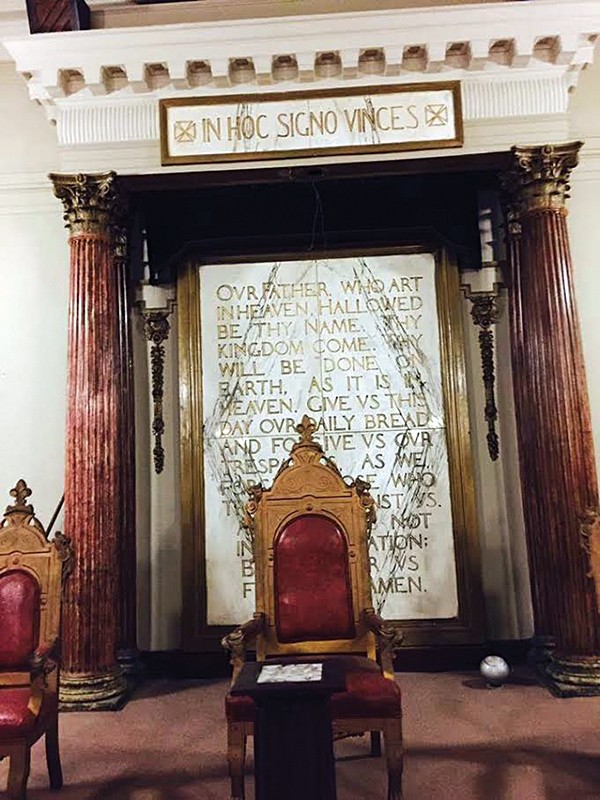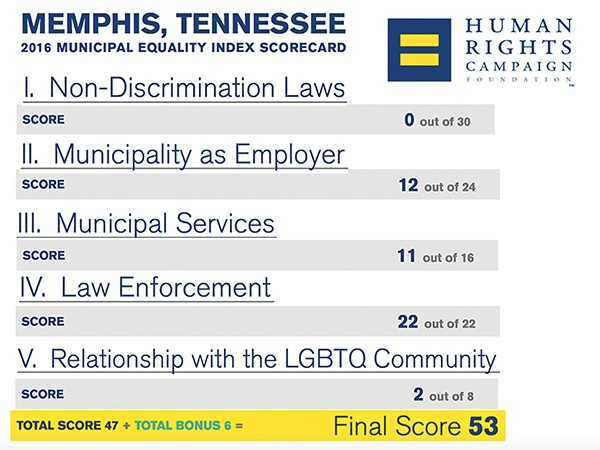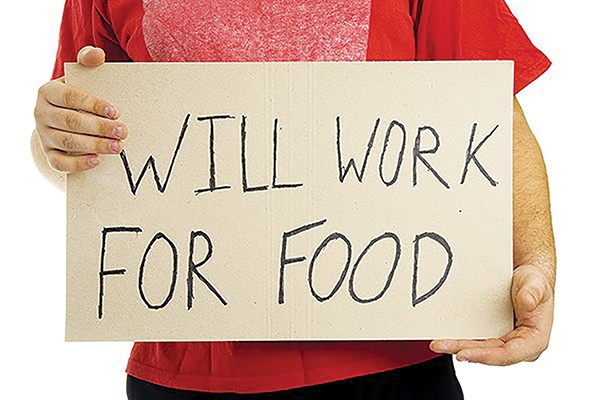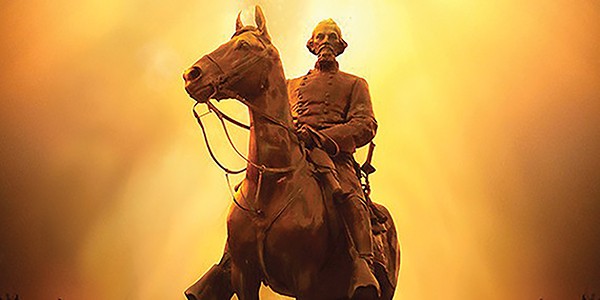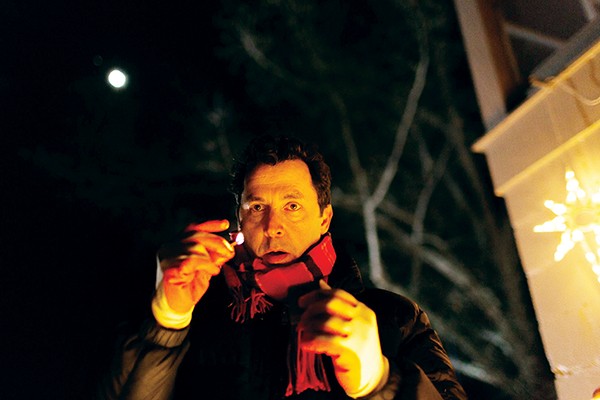Indie Memphis 2016 offers a kaleidoscope of stories — 185 films chosen from more than 1,000 entries, curated over the first seven days of November for audiences in downtown, Midtown, East Memphis, and Collierville. You can see the latest in cutting-edge cinema, from Anna Biller’s gothic feminist fantasy The Love Witch to Keith Maitland’s animated documentary Tower. You can get an early peek at mainstream studio films that will be contending this Oscar season with Casey Affleck in the haunting Manchester by the Sea, and Star Wars star Adam Driver working with arthouse legend Jim Jarmusch in Paterson. Or you can discover up-and-coming talent, such as writer/actor/director Ryon Baxter’s debut tale of coming of age in Northern California’s Emerald Triangle, Green/Is/Gold; Tim Sutton’s meditation on the Aurora massacre, Dark Night; and Matt Conboy’s chronicle of the last days of New York City’s coolest music venue, Goodnight Brooklyn.
Indie Memphis has always been exceptional among film festivals in its local focus, and this year’s lineup is the most vibrant in recent memory. There will be a celebration of one of Memphis’ greatest talents, Ira Sachs, with the Memphis premiere of his new film Little Men and a revisit of his rarely seen debut The Delta. (See this month’s Memphis magazine for an in-depth interview with Sachs.) The festival will look back at a seminal moment in Memphis filmmaking with The People vs. Larry Flynt, which was filmed here 20 years ago. Writer Larry Karaszewski, who co-created this year’s breakout TV hit The People vs. O.J. Simpson, will be on hand for the 20th anniversary screening. The Hometowner category sees six local features competing, the most entries in a decade, and where there have usually been only enough locally produced shorts to fill one bloc, this year there are enough to fill four.
Here is a look at just a few of the creators who will be bringing their films to audiences at Indie Memphis 2016.
The Invaders
Nov. 1., 6 p.m., the Orpheum Theatre’s Halloran Centre
The festival opens with a powerful, timely documentary about a lost moment in Memphis history. The Invaders were the city’s homegrown Black Power group, formed in 1966 in the midst of the civil rights struggle. Director Prichard Smith says the path to the film started in 2013. “I was having a conversation with my mom, who in 1968 worked in an all-black school in Memphis. She mentioned the Invaders to me, and in particular, she mentioned Sweet Willie Wine. I was like, how had I not heard of this dude, or this group?”
Later, at a New Year’s Eve party, he mentioned the Invaders to his longtime friend, musician J.B. Horrell, who was studying history at LeMoyne-Owen and had coincidentally attended a lecture by activist Minister Yahweh, aka Sweet Willie Wine. “His birth name is Lance Watson,” says Horrell. “When Prichard brought this guy up, I said, that’s crazy, because I have his number in my cell phone right now. We can call him up and talk to him and trace this thing out …We wanted to know, do we have a feature-length story here, or is this a short film? How deep does it get? Well, one guy would give us another guy’s phone number, or we would Google people and get in touch with them. Then we started talking to the women involved, and we saw so many angles that we realized it was a full-length movie.”
The Invaders sheds new light on the events of the 1968 Sanitation Workers Strike and the assassination of Dr. Martin Luther King Jr. Using the Freedom of Information Act, the filmmakers uncovered evidence of extensive surveillance of the group by the FBI’s secret COINTELPRO division. When the Invaders were mentioned at all in history, it was to note that they had been responsible for starting a riot during King’s visit to the city on March 28, 1968. “The FBI wrote the establishment history, through all of the journalistic connections they had all over the country,” Smith says. “The more we dug into it, the more we found what was false in that account. The Invaders started the riot? No, it was a police riot.”
Smith says the film took three years to complete, with the help of executive producer Craig Brewer. “J.B. and I started it because we thought it was a fascinating story. We’ve always been interested in subcultures and liberation movements. It became apparent that, although it is a historical film that took place in 1968, it’s super relevant. I was working on it during the Edward Snowden thing as I was covering the COINTELPRO situation the Invaders were dealing with, and then, of course, Ferguson was next. There are all these things that haven’t changed.”
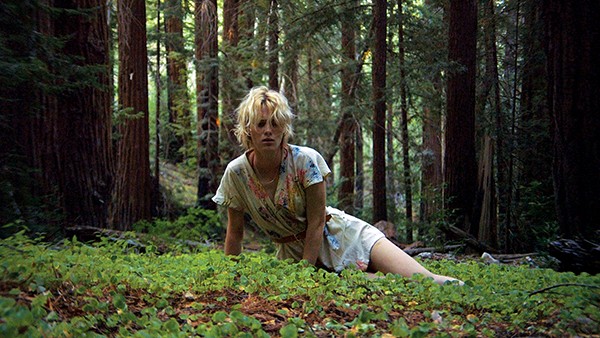
Always Shine
Always Shine
Saturday, Nov. 5, 3:40 p.m.,
Studio on the Square
Sophia Takal first came to Indie Memphis playing a free-spirited Brooklynite in the 2011 film Gabi on the Roof in July. The film, perhaps the best thing to come out of the improvisational mumblecore movement, was directed by her husband Lawrence Michael Lavine. Takal tried her hand as director that same year with Green, but her turn as Gabi launched a 30-film career as an indie it girl. Her return to the big chair, Always Shine, reveals a stunning depth of talent and vision that combines the casual naturalism of mumblecore acting with a sharp, stylish visual sense reminiscent of the work of Brian de Palma.
Beth (Caitlin FitzGerald, Masters of Sex) is a successful actress who embarks on a weekend getaway to Big Sur with her old friend Anna (Mackenzie Davis, The Martian), whose struggles in Hollywood have not paid off as handsomely, despite her superior acting talents. Anna is assertive where Beth is passive, and as the trip progresses, their friendship is rended by rivalry and jealousy, leading to a startling climax and a haunting, extended denouement. FitzGerald and Davis are nothing short of brilliant in extremely challenging roles that required subtle shadings of mood and precise physicality. Takal takes the theme of female identity distorted by male expectations from Ingrid Bergman’s classic Persona into the context of a Hitchcock-esque thriller, and the result is a genuine masterpiece that proves cinematic greatness doesn’t have to cost $100 million. This one is not to be missed.

Destroy Memphis
Destroy Memphis
Friday, Nov. 4, 8:50 p.m. & Sunday, Nov. 6, 9 p.m., Circuit Playhouse
Destroy Memphis brings together two of Mike McCarthy’s obsessions: filmmaking and historical preservation. But when he started filming in 2005, he had no idea where it would lead. “All my films up to that point had been me taking an unpaid crew through an apocalyptic Memphis landscape. It was easy to get that feel. Memphis blight is historic. We went downtown and got shots of girls crawling around in the rubble with machine guns, because it looked like a million-dollar set. It slowly began to dawn on me that we were tearing down my back lot, and my back lot was Memphis history and culture. Then when it came to giving my kids a treat, the Herenton administration was intent on tearing down 150 years of history and tradition at the fairground, and not only that, stuff that my kids were finally tall enough to ride.”
McCarthy had set out to do a history of Memphis girl bands, beginning with the Zippin Pippins, a band formed by sisters Misty and Kristi White (“The White sisters were sort of a Midtown dynamo.”) and Amy LaVere. Instead he found himself in the middle of the fight to save Libertyland, the Midtown amusement park that was home to Elvis’ favorite wooden roller coaster, the Zippin Pippin. As the fight played out over the course of years, led by attorney Steve Mulroy and activist Denise Parkinson, McCarthy was joined by producer Iddo Patt, who helped with the shooting.
When Libertyland closed and the Pippin was relocated to Green Bay, Wisconsin, McCarthy knew he had the ending to his story, but it still took several years to wrestle the more than 60 hours of footage into the shape of an 84-minute documentary, first with the assistance of editor Stephen “Wheat” Buckley, and then with Kim Lloyd. “Kim and I totally took it in another direction. I didn’t know it could be this good, honestly. I thought it would be an oddity, or a Monty Python-esque look at the absurdity of dealing with Memphis politics … I think every filmmaker here in town should be challenged to make a film about something they feel has gone wrong with the city or the cultural identity of Memphis. That’s enough for its own film festival.”
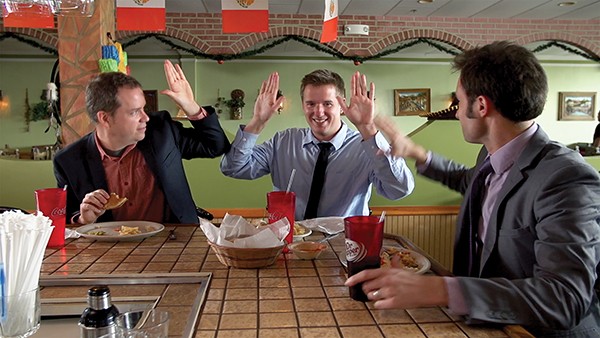
Bad, Bad Men
Bad, Bad Men
Sunday, Nov. 6, 6:30 p.m.,
Circuit Playhouse
Brad Ellis and Allen Gardner first formed Old School Pictures in their high school film class. They spent years throwing successful underground screenings of their films at Malco Trinity Commons, such as their bootleg remake of John Carpenter’s Halloween, until in 2002, they entered their ghost story Path of Fear in Indie Memphis. “That was our first festival ever, and we took home the Hometowner Award. We were like, Oh wow! There is a future for this! Indie Memphis was our breakout moment.”
The partners would go on to tackle many genres, such as the Southern Gothic vampire tale Daylight Fades and the metafictional relationship dramedy Act One. “We have so much in common, but we come at things from such differing viewpoints,” says Gardner. “Something about that tension, that friction got us to refine each other’s skills and influence each other, and we kept growing together … We’ve always said it was like being part of a band, we just make movies instead.”
Gardner says Bad, Bad Men has been percolating for a long time. “I’ve always wanted to do a comedy based on machismo and the fragility of the male ego and what can happen when it gets bruised and runs rampant. I’ve always thought it fascinating when guys feel a need to act tough and assert themselves in an aggressive way when it’s totally not necessary at all. What’s really going on is that, on the inside, they’re crying like little children who want to prove to everybody they’re big, tough guys … It was always really important that it be a really sweet, positive movie about friendship and about not judging yourself and about being proud of who you are and stepping forward.”
The film stars Gardner, Memphis actor Drew Smith, and Matt Mercer as real estate agents whose petty feud with a financial analyst (Adam Burns) and his pair of beer salesmen sidekicks, (Nathan Ross Murphy and Matthew Gilliam), escalates to comic proportions. “I think Alan’s strength as a writer is that he does characters very well, because he understands people very well,” says Ellis. “He is one of the strongest communicators I’ve ever met. He puts that into his characters, even in a silly comedy like Bad, Bad Men.”

Kallen Esperian: Vissi D’arté
Kallen Esperian: Vissi D’arté
Monday, Nov. 7, 8 p.m.,
Halloran Centre
As a film professor at the University of Memphis, Steven J. Ross has shaped a generation of Bluff City filmmakers. He has made a career of historical documentaries such as 1993’s At the River I Stand and 2007 Winslow Homer: Society and Solitude. But he has never made a film quite like his new documentary on Memphis opera singer Kallen Esperian, whom he met through their mutual friend, arts entrepreneur Greg Belz.
When Esperian’s career hit a rough patch, Belz suggested Ross make a documentary about her. Ross recalls talking to Esperian about the prospect of filming her life over the course of a year. “It’s a comeback film, but it’s not a comeback film. We don’t know what’s going to happen over the course of the next year. You could have this enormous reality TV triumph, or you could have something horrible happen to you, or you could just make some progress, starting to earn a living again … But what I’m really interested in these people who are totally devoted to you.”
The singer allowed Ross and his crew of graduate students to film intimate details of her struggle. “Kallen was unbelievable about access. You’ll see in the film, a lot of times she’s doing stuff with no makeup. There’s messy situations. She never, ever said ‘You’ve got to turn off the camera.’ Kallen’s attitude was, ‘I admire your work. You’re an artist. I’m one, too. We have to respect each other’s work. I’m trusting you. Don’t screw me.’ When you get that kind of trust, it’s a burden.”
The film premiered at an Indie Memphis event last May. “One of the things I value about Indie Memphis is that it’s a year-round organization, and I think that’s really important. They presented the film at Studio on the Square, and we sold out, so then we added a last-minute second screening, and that sold out, too. Malco offered me a week’s run, but I turned them down because [festival director Ryan Watt] wanted to show it as the festival’s closing-night film.”
Indie Memphis 2016 runs from November 1-7, with screenings at the Orpheum Theatre’s Halloran Centre, Studio on the Square, Circuit Playhouse, the Hattiloo Theatre, Malco’s Ridgeway Cinema Grill, and the Malco Towne Cinema in Collierville. You can see a full schedule and purchase tickets and passes at the festival’s website, indiememphis.com. For much more on the 2016 Indie Memphis Film Festival, including extended interviews with filmmakers and daily recommendations for the weeklong festival, go to MemphisFlyer.com.
 Larry Kuzniewski
Larry Kuzniewski 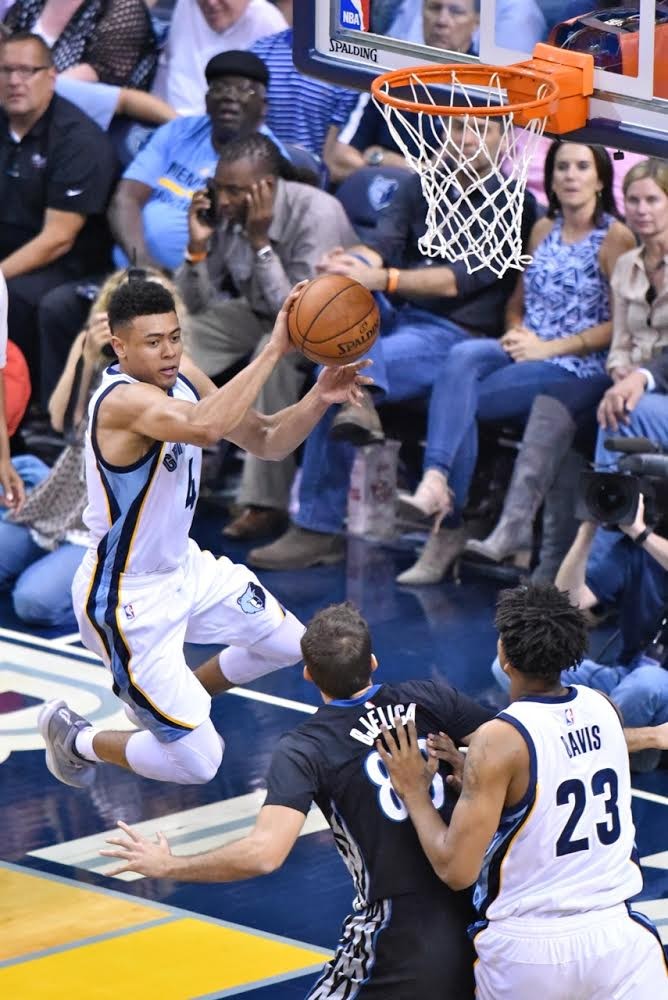 Larry Kuzniewski
Larry Kuzniewski  Larry Kuzniewski
Larry Kuzniewski 